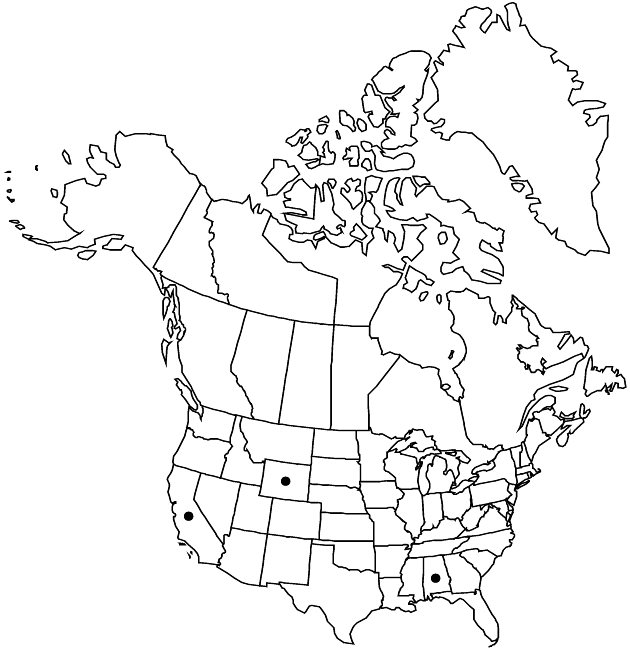Difference between revisions of "Leucanthemum maximum"
in A. P. de Candolle and A. L. P. P. de Candolle, Prodr. 6: 46. 1838.
FNA>Volume Importer |
imported>Volume Importer |
||
| (5 intermediate revisions by 2 users not shown) | |||
| Line 1: | Line 1: | ||
{{Treatment/ID | {{Treatment/ID | ||
|accepted_name=Leucanthemum maximum | |accepted_name=Leucanthemum maximum | ||
| − | |accepted_authority=(Ramond) | + | |accepted_authority=(Ramond) de Candolle |
|publications={{Treatment/Publication | |publications={{Treatment/Publication | ||
|title=in A. P. de Candolle and A. L. P. P. de Candolle, Prodr. | |title=in A. P. de Candolle and A. L. P. P. de Candolle, Prodr. | ||
| Line 8: | Line 8: | ||
}} | }} | ||
|common_names=Shasta daisy | |common_names=Shasta daisy | ||
| − | |basionyms={{Treatment/ID/ | + | |special_status={{Treatment/ID/Special_status |
| + | |code=I | ||
| + | |label=Introduced | ||
| + | }} | ||
| + | |basionyms={{Treatment/ID/Basionym | ||
|name=Chrysanthemum maximum | |name=Chrysanthemum maximum | ||
|authority=Ramond | |authority=Ramond | ||
| + | |rank=species | ||
| + | |publication_title=Bull. Sci. Soc. Philom. Paris | ||
| + | |publication_place=2: 140. 1800 | ||
}} | }} | ||
|synonyms= | |synonyms= | ||
| Line 27: | Line 34: | ||
|elevation=0–1500+ m | |elevation=0–1500+ m | ||
|distribution=Ala.;Calif.;Wyo.;w Europe (widely cultivated;sparingly adventive). | |distribution=Ala.;Calif.;Wyo.;w Europe (widely cultivated;sparingly adventive). | ||
| + | |introduced=true | ||
|discussion=<p>The name Shasta daisy of horticulture is associated also with <i>Leucanthemum</i> ×superbum (Bergmans ex J. Ingram) Bergmans ex D. H. Kent, which is generally thought to have been derived from hybrids between <i>L. maximum</i> and <i>L. lacustre</i>. Cultivars of “Shasta daisy” number in the dozens, including “single,” “double,” “quill,” and “shaggy” forms; they may be encountered as waifs or persisting from abandoned plantings.</p> | |discussion=<p>The name Shasta daisy of horticulture is associated also with <i>Leucanthemum</i> ×superbum (Bergmans ex J. Ingram) Bergmans ex D. H. Kent, which is generally thought to have been derived from hybrids between <i>L. maximum</i> and <i>L. lacustre</i>. Cultivars of “Shasta daisy” number in the dozens, including “single,” “double,” “quill,” and “shaggy” forms; they may be encountered as waifs or persisting from abandoned plantings.</p> | ||
|tables= | |tables= | ||
| Line 36: | Line 44: | ||
-->{{#Taxon: | -->{{#Taxon: | ||
name=Leucanthemum maximum | name=Leucanthemum maximum | ||
| − | + | |authority=(Ramond) de Candolle | |
| − | |authority=(Ramond) | ||
|rank=species | |rank=species | ||
|parent rank=genus | |parent rank=genus | ||
| Line 51: | Line 58: | ||
|publication title=in A. P. de Candolle and A. L. P. P. de Candolle, Prodr. | |publication title=in A. P. de Candolle and A. L. P. P. de Candolle, Prodr. | ||
|publication year=1838 | |publication year=1838 | ||
| − | |special status= | + | |special status=Introduced |
| − | |source xml=https:// | + | |source xml=https://bitbucket.org/aafc-mbb/fna-data-curation/src/2e0870ddd59836b60bcf96646a41e87ea5a5943a/coarse_grained_fna_xml/V19-20-21/V19_977.xml |
|tribe=Asteraceae tribe Anthemideae | |tribe=Asteraceae tribe Anthemideae | ||
|genus=Leucanthemum | |genus=Leucanthemum | ||
Latest revision as of 19:57, 5 November 2020
Perennials, 20–60(–80+) cm. Stems simple or distally branched. Basal leaves: petioles 50–80(–200+) mm, expanding into obovate to spatulate blades 50–80(–120+) × 15–25(–35+) mm, margins not lobed, usually toothed, rarely entire. Cauline leaves petiolate or sessile; blades oblanceolate to lanceolate or linear, 50–120+ × 8–22+ mm, margins of mid-stem leaves usually entire proximally, regularly serrate distally. Involucres 18–28+ mm diam. Phyllaries (the larger) 2–3 mm wide. Ray florets 21–34+; laminae 20–30(–40+) mm. Ray cypselae 2–3(–4) mm, apices usually bare, rarely obscurely auriculate. 2n = 90, 108.
Phenology: Flowering spring–summer.
Habitat: Disturbed sites, meadows, seeps, clearings
Elevation: 0–1500+ m
Distribution

Introduced; Ala., Calif., Wyo., w Europe (widely cultivated, sparingly adventive).
Discussion
The name Shasta daisy of horticulture is associated also with Leucanthemum ×superbum (Bergmans ex J. Ingram) Bergmans ex D. H. Kent, which is generally thought to have been derived from hybrids between L. maximum and L. lacustre. Cultivars of “Shasta daisy” number in the dozens, including “single,” “double,” “quill,” and “shaggy” forms; they may be encountered as waifs or persisting from abandoned plantings.
Selected References
None.